July 2022 | Luis A. Martinez
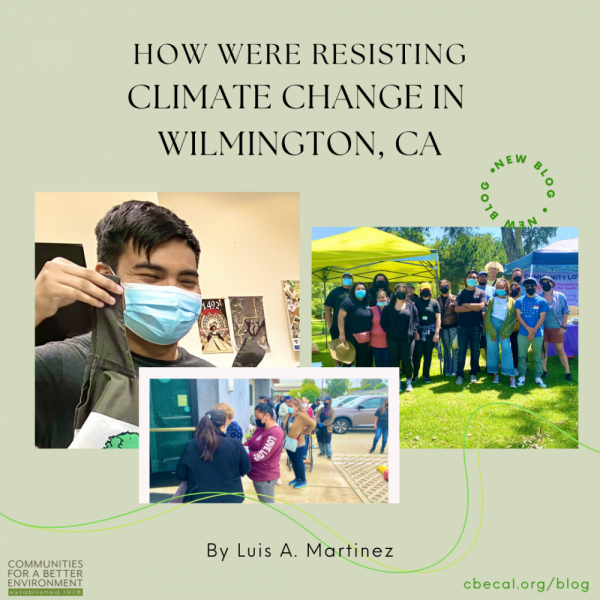
Wilmington, California, a neighborhood nestled between heavy industry in the City of Los Angeles, where I grew up and now work, is caught in a climate change battle. For generations, residents have suffered from the impacts of climate change. – Long before climate change was a popular conversation piece, Wilmington residents were all too familiar with the link between fossil fuel expansion projects and worsening climate impacts. I remember incredibly hot summer days as a child where the sky looked orange, and smelled like campfire, eggs and manure. I eventually realized that the strong smell of burning wood came from a wildfire that was hundreds of miles away from where I lived, and the cocktail of bad smells came from the oil pumpjacks and refineries in my community. On days with especially poor air quality, we were advised to stay indoors—like prisoners in our own community.
Wilmington is uniquely affected by polluting industries that have expedited and intensified climate change. This vicious cycle is common throughout the United States, especially in low-income environmental justice communities. The dominant conversations don’t acknowledge the root cause of what is happening to the Earth and who is responsible for the harm endured in communities like Wilmington. Instead, individuals are blamed and told that climate catastrophes will only increase in frequency and severity as time passes unless we the people act now. Meanwhile, fossil fuel companies, the largest greenhouse gas emitters, are rarely held accountable but permitted to profit at the expense of our health and safety. It’s time to change the narrative: working-class individuals who are either (1) employed by fossil fuel industries or (2) rely on oil-based commodities are not to blame. Instead, (1) lack of equitable access to alternative clean energy and (2) limited access to affordable sustainably-produced resources are the true culprits.
In other words, we need transformative systematic change that provides communities like Wilmington the opportunity to choose to divest from the fossil fuel industry.
In college, I learned about cumulative impacts and how they consist of all the awful air quality conditions that communities like Wilmington are subjected to. Cumulative impacts consist of all the bad air that is emitted by the same industries that have created the global climate crisis. I’ve been familiar with CBE since high school and became an active member while attending Los Angeles Harbor College. During this time, I was able to connect with others in the community whose families, like mine, have been affected by industry for decades. Over the years, I’ve learned about people who suffer from health impacts such as asthma, bloody noses, cancer and more. These growing health impacts are unacceptable.
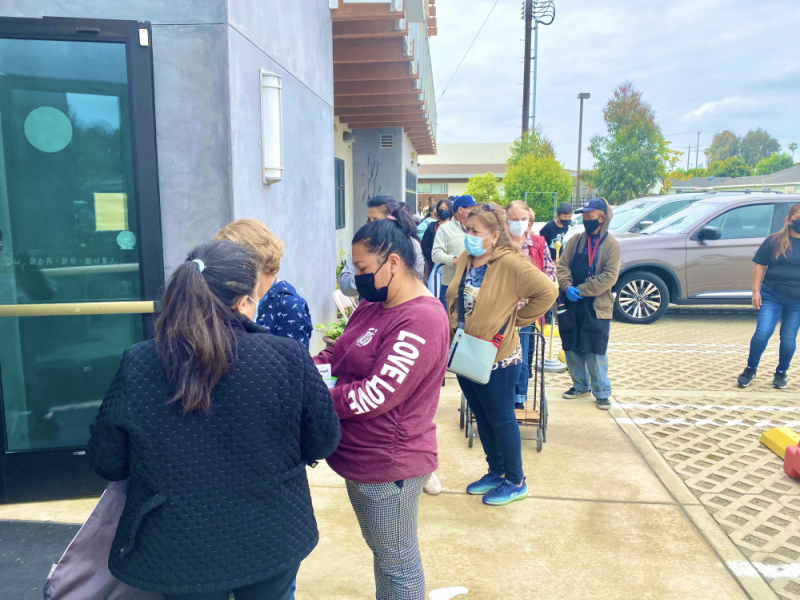
CARE Team Member, Maria Montes surveying community members at the Tzu Chi Clinic in Wilmington, CA. 2022. PC: Laura Gracia
Strong and resilient Wilmington residents are constantly fighting for a cleaner and healthier future. My work at CBE consists of building adaptation and resiliency within Wilmington. When I was hired as the Climate Adaptation and Resilience Enhancement (CARE) Intern for CBE in March of 2021, I had two months of organizing experience, having organized around providing mutual aid with the South Bay Abolitionist Collective (SBAC), formerly known as South Bay Community Care (SBCC). At CBE, I was focused on completing two major tasks: creating curriculum revolving around community climate resilience and conducting a survey on resilience hubs. In our work implementing resilience hubs at community centers in Wilmington, we first needed to engage with the community so that they could dictate how one should look. It is not enough to simply drop a resilience hub in a community if none of the residents know about it and if the resources are not representative of community needs, those resources would simply go to waste.
As CARE Coordinator Laura Gracia and I both thought about the many directions we could take for these projects, we prioritized community insight and mutual aid. As a result, once we had completed our curriculum project, which was a social media toolkit, we were set on hiring community members to our CARE team. Various graphics and captions from the toolkit were then posted on CBE social media accounts with data on the cumulative impacts that EJ communities face from industry and climate events. These posts also emphasized the need for community resilience in the form of resilience hubs and what we began to call “resilience kits”. We found that a lot of items necessary for an emergency preparedness kit or “resilience kit” were items like first aid supplies, personal protection equipment, food, clothes, hand crank radios, solar powered batteries and other items.
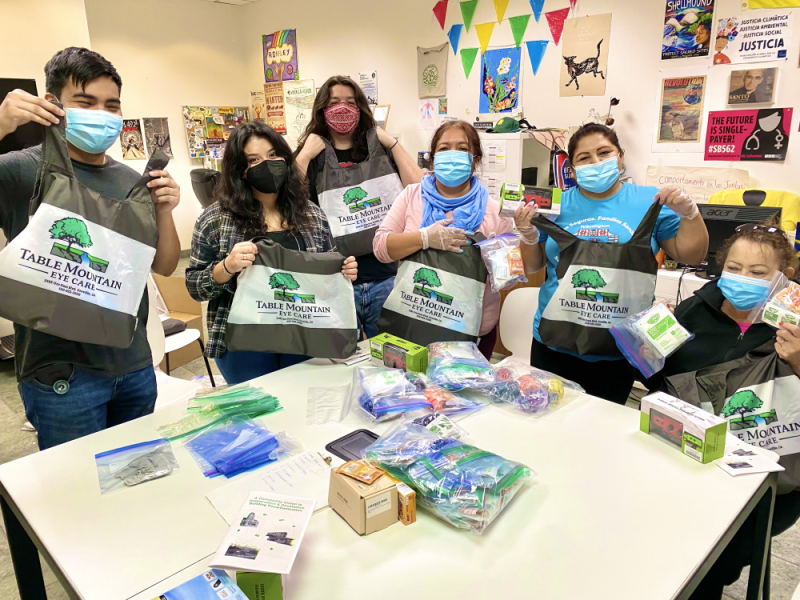
Luis and CARE Team members creating resilience kits, 2022. PC: Laura Gracia
We then hired 3 CBE members and Wilmington residents to be part of our CARE team. The CARE team was tasked with creating the resilience hub survey to identify where a resilience hub should be located and what it should offer, while also distributing the resilience kits. Our CARE team consisted of 5 folks, including Laura and I, which was a multi-generational team that were passionate about learning community-based climate solutions centered around resilience. We first wrote a survey that asked folks where a Wilmington resilience center should be and what it should offer. It also asked other important questions such as how community members would get there, how close industry neighbors their homes, and which climate events residents were most concerned about. Every individual who took the survey was given a resilience kit along with copies of the curriculum. In total, 123 surveys were conducted and over a hundred resilience kits were distributed which allowed us to reach our goal of prioritizing community engagement and mutual aid.
To further our goal of mutual aid prioritization, we then began to coordinate with the mutual aid organization that I am a member of, SBAC. They distribute hundreds of meals every Sunday to multiple unhoused encampments throughout the South Bay and Harbor areas. One of these encampments bordered Wilmington and Harbor City, so we proposed to donate over 50 resilience kits to SBAC and to support them in distributing these kits to the Wilmington encampment. SBAC also came to the office in Wilmington to build the resilience kits for this distribution with the CARE team and it was amazing to see CBE work alongside a local mutual aid org. It allowed for solidarity amongst orgs and created a shared space where folks from multiple generations and cultures could come together in an effort to further community resilience that is inclusive of all Wilmington residents, housed and unhoused. That same day, we successfully assisted in the distribution of the “resilience kits” in that encampment. The CARE team continued to work alongside SBAC and organized a food drive with them and another mutual aid organization known as Community Loving on May 1st of 2022, at Banning Park in Wilmington.
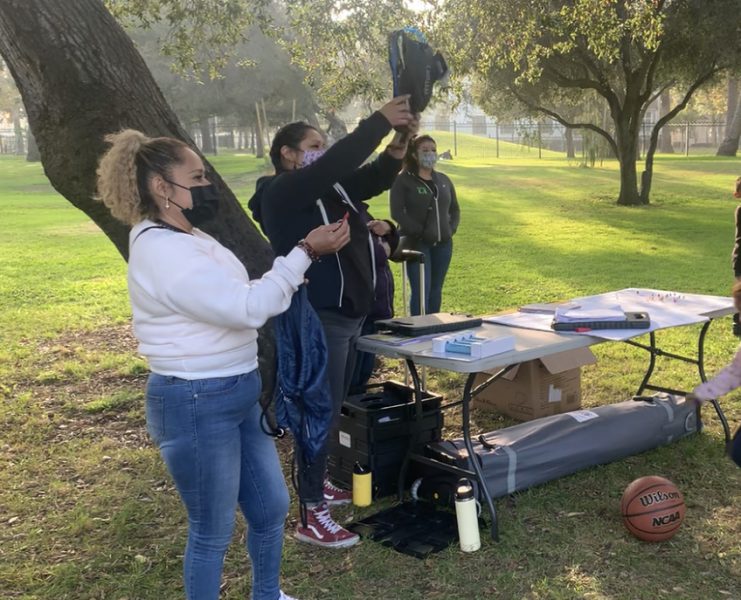
Laura and CARE team members, Dulce and Wendy, raffling off prizes while surveying folks at Banning Park in Wilmington, CA. 2021. PC: Luis A. Martinez
The survey ultimately reinforced what we have already come to know about Wilmington: top community concerns are industrial pollution and cumulative impacts from industry and climate change. We also confirmed that resilience hubs are greatly needed in Wilmington and that they should prioritize Wi-Fi, air filtration, food, water, first aid supplies, and personal protection equipment.
Now, in 2022, as we coordinate with various community centers and clinics in Wilmington, we constantly refer back to this survey during these meetings so that the energy priorities of the people are uplifted to the highest degree. Community centers are great locations for resilience hubs. We will also plan another mutual aid / resilience kit distribution event for the next coming summer months, which will also be greatly needed due to extreme heat and higher pollution rates caused by wildfires and polluting industries.
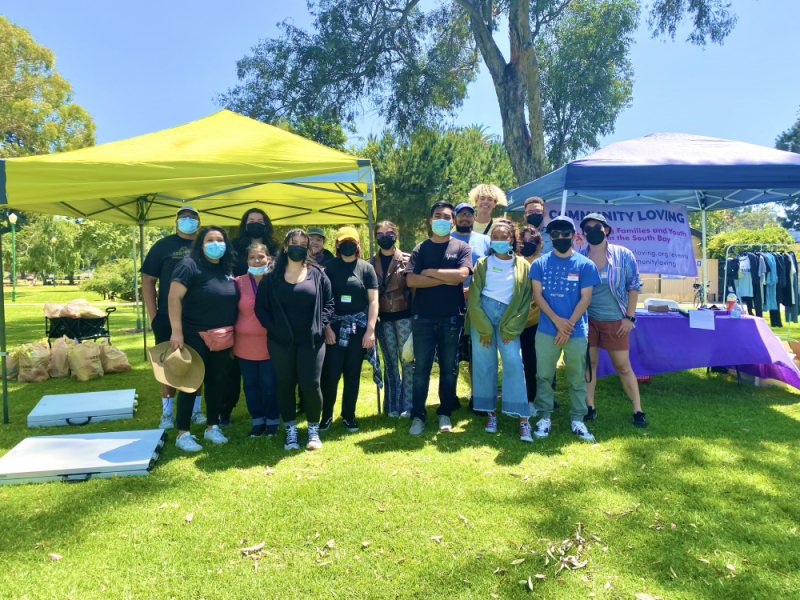
Luis, Laura and the CARE team during our Wilmington Food Drive at Banning Park. Along with the mutual aid groups, Community Loving and South Bay Abolitionist Collective. 2022. PC: Laura Gracia
Community Climate Resilience in Wilmington will lead the path to the ultimate community solution which is echoed through the concerns of Wilmington residents. That solution is fossil fuel phase out and, until that goal is fully realized, resilience will remain a priority for us in the CARE team and the people of Wilmington.


